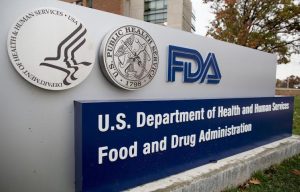 The United States is on the brink of a full-blown opioid epidemic and medical professionals are scrambling to stay ahead of the trend. Of course, one strategy is to increase education and awareness to try and keep people away from these drugs. At the same time, it is possible that opioid prescriptions may have been a little too abundant over the past decade or two, flooding the street market with widely available product.
The United States is on the brink of a full-blown opioid epidemic and medical professionals are scrambling to stay ahead of the trend. Of course, one strategy is to increase education and awareness to try and keep people away from these drugs. At the same time, it is possible that opioid prescriptions may have been a little too abundant over the past decade or two, flooding the street market with widely available product.
The situation has reached dire proportions; currently approximately 80 Americans die from opioid overdose every day.
This means that clinicians need additional strategies and interventions that could potentially help stop overdose for those who already have a problem. Currently there are only three medical interventions approved to treat opioid addiction: methadone, buprehoprhin, and naloxene. Unfortunately, access to these medications is highly restricted; more than half of those who need treatment can’t get a hold of these drugs because either they have no access to providers or simply can’t afford the drug.
To address this, of course, the industry has been working on a new implanted device which can deliver the much needed medicine. This new treatment is called Probuphine.
Because it’s an implant, Probuphine can’t easily be diverted and sold to addicts, who sometimes abuse the medications designed to help patients recover from addiction just as they do other, stronger opioids,” explains Joel V. Brill, MD, who is the chief medical officer for Predictive Health LLC. “It also takes human error out of the equation—each implant is left in place for six month so patients can’t forget to take the drug or take too much.”
Now, the US FDA had advised recommendation of this treatment in January, but—like just about all forms of treatment—a high price could be its biggest obstacle. Right now, the manufacturer wants to price the drug on par with other injectable opioid treatments; some of those cost upwards of $1,000 per month.
Unfortunately, another obstacle may be the limited number of doctors able to actually prescribe the drug. Brill continues, “Doctors need special permission to prescribe opioid replacement therapies and federal law only lets doctors treat 100 patients at a time, leaving the medicines out of reach for many. Lawmakers considered raising the 100-patient limit in opioid legislation now in conference committee, but neither the House nor Senate passed a measure to do so.”
